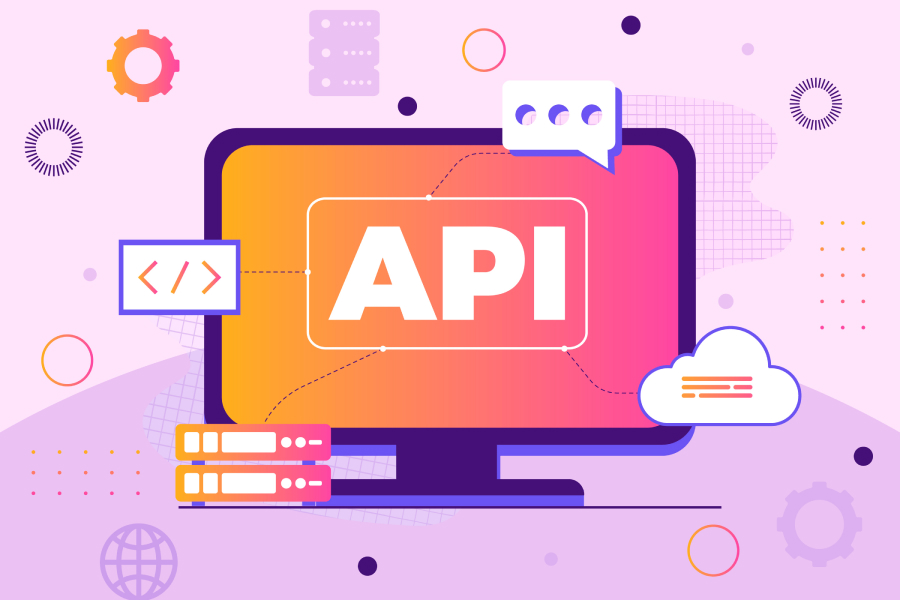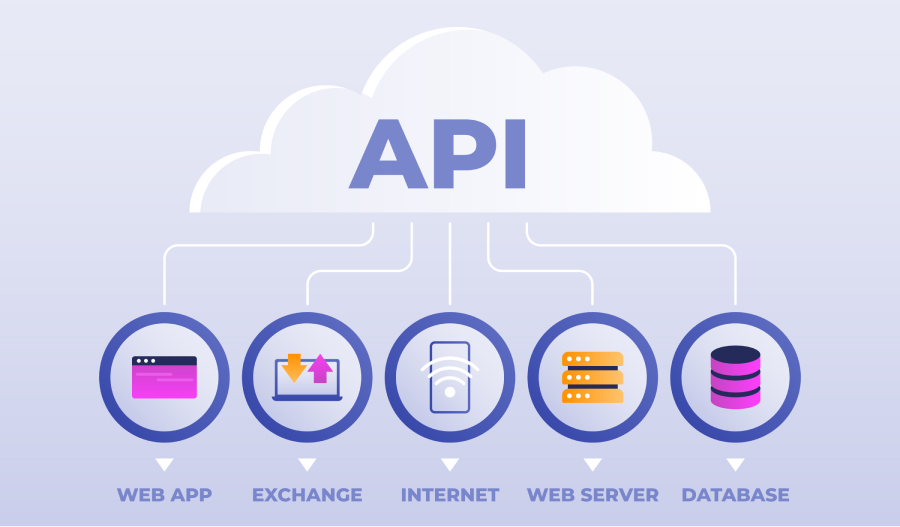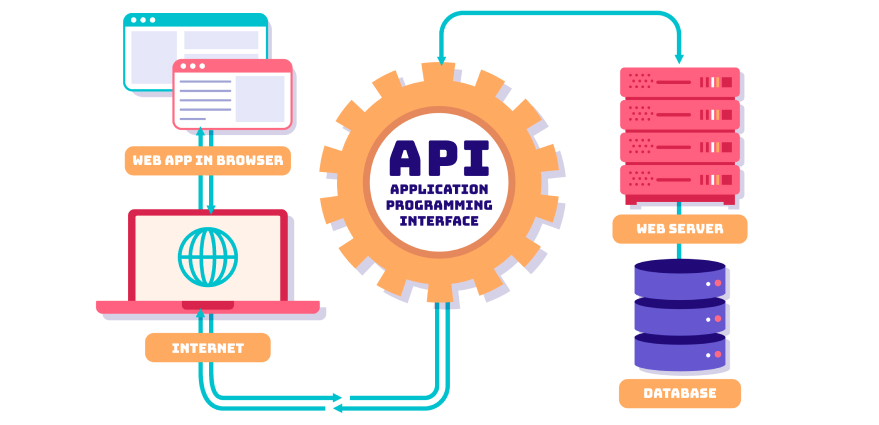
Understanding the Role of APIs in Software Development
Definition of an API
Have you ever pondered how the apps and platforms you use daily connect and interact with one another? That magic behind the curtain is all thanks to APIs, or Application Programming Interfaces. At its core, an API can be thought of as a set of rules and protocols that allow distinct software applications to communicate. It's much like a bilingual translator who bridges the gap between two people speaking different languages, ensuring they understand each other.
Overview of Software Development
Software development, in essence, is an intricate dance of creating applications tailored to meet specific needs and solve real-world challenges. From the apps that wake us up in the morning, guide us on the road, or even those that let us share memories with loved ones, every digital touchpoint is a culmination of codes, algorithms, user interfaces, and an arsenal of developer tools. In this grand theatre of software creation, it's easy to see the story of human ingenuity, our undying spirit of innovation, and the pursuit of better solutions in the digital age.
Importance of APIs in Today's Digital Age
Living in a rapidly digitalizing era, we've seen how technology has intertwined with almost every aspect of our lives. Here, foundational technologies like APIs have emerged not just as facilitators but as pillars supporting the edifice of our digital transformation. Be it banking, shopping, entertainment, or healthcare, APIs ensure that the multitude of software solutions out there can play nice, collaborate, and offer us integrated experiences. They have become the silent heroes, stitching together the fabric of our digital ecosystem.
Role of APIs in Software Development
Image suggestion: Gears interlocking, with labels showing the different roles of APIs.
Facilitating Software Integration: API Integration
In the mosaic of modern software development, individual modules often need to come together to offer a holistic experience. API integration tools serve as the glue in this process. They ensure that disparate software systems, each designed for its unique purpose, can join hands and deliver a united front. Think of APIs as the connectors in a train set, bridging gaps and enabling a smooth ride across software landscapes.
Enhancing Software Functionality: API Functionality
In the digital domain, user experience is king. And an essential part of that experience lies in accessing and presenting the right data at the right time. Through API functionality, software can tap into reservoirs of data, pulling insights and information from various sources. It's akin to having a magical portal that can bring treasures from distant lands, enriching the user's journey within an application.
Improving Communication: Web Services & API Endpoints
Imagine a bustling digital city where data is always on the move. APIs act as the transport hubs in this city - they are the endpoints ensuring that data packets travel safely from one point to another. These hubs, known as API endpoints, paired with web services, build a robust communication infrastructure, vital for the data-driven world we operate in.

Types and Components of APIs
Image suggestion: A tree diagram showing different API types branching out.
RESTful API: Benefits and Use Cases
RESTful APIs have become the darling of the digital world, and for a good reason. Representational State Transfer, or REST, is an architectural style that uses standard conventions and protocols. The beauty of RESTful APIs lies in their simplicity and stateless nature, which means every request from a user interface carries all the information needed for processing. It's like sending a self-contained package with everything inside, ensuring it's processed correctly upon delivery. This approach is ideal for web services as it promotes scalability, reliability, and ease of integration.
GraphQL: A Dynamic Approach to APIs
Enter GraphQL - a game-changer in how data is queried and manipulated. Developed by Facebook, GraphQL lets developers specify exactly what data they need, eliminating unnecessary information and streamlining data retrieval. It's akin to customizing an order at a restaurant - you get precisely what you're in the mood for, nothing more, nothing less.
SDK: How APIs Interface with Software Development Kits
Delving deeper into the developer's toolkit, we find SDKs or Software Development Kits. These are comprehensive sets of tools, guidelines, and programs to aid in software creation. Now, APIs within SDKs act like the favorite tools in a craftsman's kit, tools that the craftsman reaches out for the most. They streamline processes, enable specific functionalities, and ensure that software solutions are tailored just right.
Designing and Implementing APIs
Image suggestion: Blueprint of an API structure with various endpoints and design elements.
Best Practices: API Design Principles
Creating an API isn’t a matter of mere coding; it's an art combined with science. APIs should be designed with both the developer and the end-user in mind. Consistent naming conventions, clear and concise endpoints, and intuitive data structures are just the beginning. Adherence to industry standards isn't merely for compatibility; it ensures the longevity and broad usability of the API. Additionally, feedback loops are crucial. Continuous iterations based on real-world use make an API robust and adaptable.
Understanding API Documentation
API documentation isn't just a manual; it's the narrative of the API's universe. It tells its tales, spells out its norms, and introduces its characters (endpoints). For developers, a well-crafted API documentation serves as both a guide and a reference point. A stellar documentation outlines not just the 'how' but also the 'why,' offering insights into design choices and expected outcomes.
Ensuring Seamless Evolution: API Versioning
In the ever-evolving realm of software development, stagnation is the precursor to obsolescence. APIs, too, evolve over time. However, sudden changes can disrupt systems that depend on them. That's where API versioning comes into play. By marking different stages of an API's life with versions, developers can ensure backward compatibility and smooth transitions. Think of it as chapters in a book; the story progresses, but the previous events remain accessible and undisturbed.

Navigating the Complex Landscape of APIs
Image suggestion: A detailed map with various API terminologies marked as destinations.
Microservices: Decentralizing with APIs
In the software world, 'monolithic' has become somewhat of a buzzword, and not always in a good way. Microservices architecture is the antidote to monolithic structures. It breaks software down into smaller, independent services that run their processes. APIs serve as the lifelines connecting these services, ensuring that even while decentralized, the system operates in harmony.
Third-party APIs: Integrating External Solutions
Not all challenges need a ground-up solution. Third-party APIs come to the rescue when there's an external platform offering the exact solution needed. From payment gateways to geolocation services, third-party APIs save time, reduce costs, and allow businesses to leverage established expertise.
OpenAPI: Standardizing API Descriptions
With the plethora of APIs in the wild, understanding each one's nuances can be a Herculean task. Enter OpenAPI – it's like the Rosetta Stone for APIs. By offering a standardized description format, OpenAPI ensures that developers across the spectrum can quickly understand and integrate any API adhering to this standard.
Ensuring Safe and Secure API Use
Image suggestion: A fortress with API symbols on its walls, representing protection.
API Security Best Practices
The world of APIs is no stranger to the threats looming in the digital shadows. Data breaches, unauthorized access, and other cyber threats constantly challenge developers. But with challenges come solutions. Best practices in API security include using authentication tokens, implementing rate limiting, and setting up thorough logging mechanisms. It's about building walls, but also about having sentinels (monitoring tools) watching day and night.
Common Threats and How to Mitigate Them
Awareness is the armor against digital threats. Recognizing the common vulnerabilities – from injection attacks to broken authentication – and having the tools and practices to counter them is crucial. Periodic audits, penetration testing, and staying updated on security trends fortify API defenses.

The Broader Benefits of APIs in Software Architecture
Image suggestion: A sprawling digital cityscape, with each building labeled as a benefit of API.
Scalability and Flexibility
APIs don’t just enable functionality; they empower growth. Their modular nature ensures that as a business scales, its software ecosystem can too, adapting to increased loads and expanding requirements without monumental overhauls.
Cost Efficiency and Faster Time to Market
In the competitive arena of software solutions, time is of the essence. APIs, especially third-party ones, can significantly reduce development times. By leveraging pre-existing solutions, businesses can achieve faster rollouts and, in turn, a quicker return on investment.
Enhanced User Experience Through Integrated Solutions
At the heart of any software solution is the end-user. APIs enable integrations that lead to richer user experiences. From pulling in social media feeds to processing payments or even offering AI-driven insights, APIs turn software platforms into versatile powerhouses catering to diverse user needs.
Conclusion
Image suggestion: A horizon with the sun setting, symbolizing the culmination of our journey through the world of APIs.
Reflecting on the Pervasive Role of APIs in Software Development
It's a wonder how something as intangible and behind-the-scenes as APIs can drive the forefront of digital experiences. From modest mobile apps to colossal enterprise systems, the magic touch of APIs is ubiquitous. Their contribution isn't just about facilitating processes; it's about breaking boundaries, ensuring that technological advancement isn't confined by silos but flows freely, enriching every software solution it touches.
Future Trends: The Evolving Landscape of APIs
The canvas of technology is vast and ever-changing. As we gaze into the horizon, a few trends in APIs are discernible. We are moving towards even more automated API generation and integrated developer environments. The push for standardized security practices is intensifying, especially in the wake of rising cyber threats. Moreover, as Artificial Intelligence and Machine Learning integrate deeper into our systems, APIs will play an even more significant role in ensuring seamless, real-time data flows for these intelligence processes.
In essence, the story of APIs in software development is still unfolding. And as technology continues to advance, this narrative will only grow richer, denser, and more fascinating.
References
- "Designing Web APIs: Building APIs That Developers Love" by Brenda Jin, Saurabh Sahni, and Amir Shevat. This book offers a deep dive into creating web APIs, with a strong emphasis on the needs and concerns of developers who will use the API.
- "APIs: A Strategy Guide: Creating Channels with Application Programming Interfaces" by Daniel Jacobson, Greg Brail, and Dan Woods. This book provides a comprehensive view of the strategic significance of APIs in modern business, covering both their technical and business aspects.
- "RESTful Web APIs: Services for a Changing World" by Leonard Richardson, Mike Amundsen, and Sam Ruby. A detailed exploration of designing APIs using the REST architectural style, this book gives insights into best practices for creating web services.
 Mark Petrenko
Mark Petrenko 
